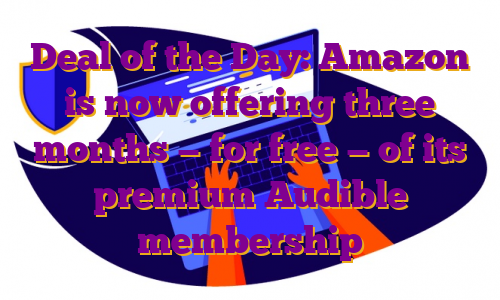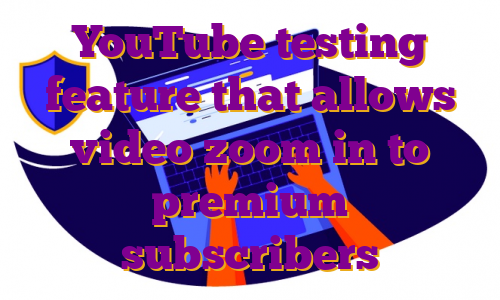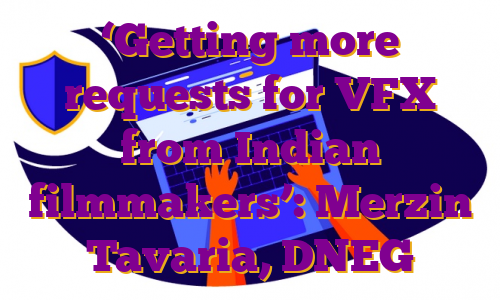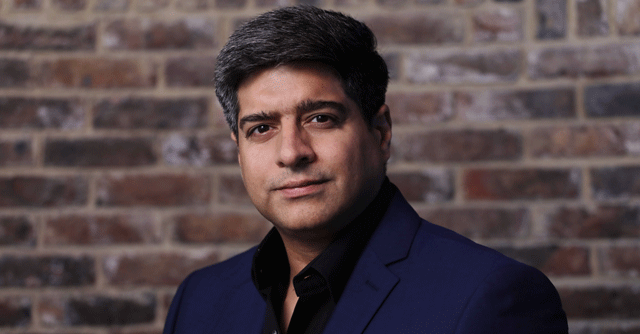In this weekly series, CNBC takes a look at companies that made the inaugural Disruptor 50 list, 10 years later.Following the launch of the iPhone in 2009, Former Yahoo! employees Brian Acton and Jan Koum had the idea to create an app that would allow users to update statuses on their contact list, which would then signal to their contacts where they were, or what they were up to at the moment. Koum recruited the services of iPhone developer Igor Solomennikov, and they created their first prototype. Among its first users, however, the app proved to be unpopular, and was riddled with connectivity issues and crashes. It was beginning to look like a failed concept, and Koum debated abandoning the project altogether and pivoting to a different job. But then, Apple launched push notifications, and that changed everything for what is now the most popular messaging app worldwide — WhatsApp.Push notifications, which allowed automated messages to be sent by an application without the app needing to be open, provided the potential for a more interactive model of Acton and Koum’s idea.Subsequently, the company altered the app’s function to then send push notifications out when a user changed their status. Quickly, the small circle of the founding team’s friends that used the app began to ping each other with custom statuses throughout the day, serving more as instant messaging than the originally intended status markers.Leaning into this trend, they redesigned the app, and released WhatsApp 2.0 in August 2009, focusing on the instant messaging component — which quickly became the app’s defining feature. The newly redesigned app immediately got attention, and the number of active users grew to 250,000 in what seemed like overnight. Soon after, Acton persuaded former colleagues at Yahoo! to invest $250,000 in seed funding. After months in beta, the iPhone application was released on the App store in November 2009, with Blackberry and Android versions following soon after. It also switched from a free service to a paid one, charging $1 a year to cover the cost of sending verification texts to users. Over the next few years, WhatsApp continued to rapidly grow, supported by over $50 million in investment funding from Sequoia Capital. In February 2014, WhatsApp was acquired by Facebook (now Meta) for $22 billion, making it the largest acquisition of a venture capital-backed company to date. Following that, WhatsApp became the most popular messaging app in the world, with more than 600 million users. Several major changes also followed, including web capabilities, voice calling, and a removal of the $1 annual subscription fee. Just as WhatsApp had capitalized off of the emerging trend of push notifications, it did the same with encryption. WhatsApp added end-to-end encryption to every form of communication on its service, meaning that no one, even WhatsApp employees, could access the data that was sent across its network.Ultimately, WhatsApp’s success was found within its emphasis on user experience, embellished by the priority of privacy and a disdain for advertisements. WhatsApp democratized phone-based communication and kept user interest at the forefront of their decision making. “Behind every product decision,” the company stated, “is our desire to let people communicate anywhere in the world without barriers.” This was the reason behind ending the $1 annual subscription fee, in order to remove the barrier faced by users without payment cards. And it was also the reason they stood firm in not employing third-party advertisements on the app, which would have inevitably cluttered the interface for users. When WhatsApp was acquired by Meta, the company infamously promised, “No ads, no games, and no gimmicks.” To founders Acton and Koum, this phrase represented the ethos of the company.”You can still count on absolutely no ads interrupting your communication,” Koum said at the time. “There would have been no partnership between our two companies if we had to compromise on the core principles that will always define our company, our vision and our product.” Yet, in 2016, that promise was revoked, when the company launched a major update to its privacy policy that announced it would start sharing user information and metadata with Facebook. Although the company’s end-to-end encryption continued to protect the content of user communication, the update allowed WhatsApp to share a myriad of other user information with Facebook, including users’ phone numbers, app use frequency, information on how users interacted with one other, IP address, language, mobile network, and even location information, cookies, and payment data. Not long after this update, both founders Acton and Koum stepped down from WhatsApp and Facebook. “At the end of the day, I sold my company,” Acton told Forbes. “I sold my users’ privacy to a larger benefit. I made a choice and a compromise. I live with that every day.”But while WhatsApp’s commitment to users’ best interests, including data privacy, helped the company become one of the most ubiquitous apps in the world, it also prevented it from ever really becoming profitable. With no ads — which accounts for 97% of Meta’s revenue — WhatsApp has maintained little profitability.Today, Zuckerberg is hoping to change that, particularly by focusing on WhatsApp Business, which first launched in 2018. He recently drew comparisons to how the company monetized Facebook and Instagram after building large audiences in a conversation with CNBC’s Jim Cramer.”WhatsApp is really going to be the next chapter, with business messaging and commerce being a big thing there,” Zuckerberg told CNBC earlier this month.WhatsApp Business currently has two components, the free WhatsApp Business app for small businesses, which allows businesses to communicate directly with customers, and the WhatsApp Business platform, an API for larger corporations, that charges companies for every conversation after the first 1,000. Aiming to boost advertising revenue, stay relevant with small businesses and gain incremental revenue from the premium services offered, WhatsApp will soon roll out a premium service to small businesses that focuses on ‘click-to-message’ advertising, which allows consumers to click on a company’s ad and immediately be directed to a conversation with that business on WhatsApp. “We think messaging in general is the future of how people are going to want to communicate with businesses and vice versa. It’s the fastest and easiest way to get things done,” a WhatsApp spokesman said.This comes at a time of great uncertainty, as Meta recently missed on both the top and bottom lines for Q2, and gave a troubling forecast for the next quarter.Whether or not it can successfully monetize the more than 2 billion people that use WhatsApp today is yet to be seen. One thing is certain, however — that Zuckerberg and Meta is betting that WhatsApp Business will be an essential component of the company’s future.”Click-to-message is already a multi-billion dollar business for us and we continue to see strong double-digit year-over-year growth,” outgoing Facebook Chief Operating Officer Sheryl Sandberg said on the company’s second-quarter earnings call. It “is one of our fastest growing ad formats for us.” Sign up for our weekly, original newsletter that goes beyond the annual Disruptor 50 list, offering a closer look at list-making companies and their innovative founders. .
Deal of the Day: Amazon is now offering three months — for free — of its premium Audible membership
Through the end of the month, Amazon Prime members can get 3 free months of Audible Premium Plus, the online retailer’s audio entertainment platform featuring thousands of audiobooks, podcasts and more.
Getty Images
Hey la, hey la, commutes are back(ish)! While the gradual re-opening of the world means more time on the roads and tubes, it also means those of us clamoring for designated podcast-listening and reading time are finally back in the game. Through the end of the month, Amazon Prime members can get 3 free months of Audible Premium Plus, the online retailer’s audio entertainment platform featuring thousands of audiobooks, podcasts and more. It also includes one free bestseller or new release of your choice every month, in addition to complete access to Audible’s expansive library. Once the trial ends, it’s $14.95/month (compared to the regular Audible Plus membership at $7.95/month). Don’t have a Prime membership yet but considering it? Check out this guide to see if Amazon Prime is worth it for you. What reviewers say about Audible Premium Plus: The Premium Plus version of the Audible service is excellent for folks who are going to use it frequently to listen to audiobooks or podcasts, according to Wirecutter’s deal editor Nathan Burrow. “The primary difference between Premium Plus and Premium is the inclusion of a book a month of new releases and best sellers,” he tells MarketWatch Picks. “If you’re interested in these hot summer beach reads that will be on people’s radar this summer, then this trial is a great way to pursue it, see if it’s right for you and see if you want to continue.” Also, Burrow notes as far as subscriptions go, Audible is good at reminding you the triall is about to be over — they send a dedicated reminder email when your three months is almost up. Learn more: Amazon Prime members can get 3 free months of Audible Premium Plus through July 31. Another great feature of the Premium Plus offering: You can bank the monthly bestseller or new release credits you don’t use. “The credits you earn are not ‘use or lose’,” writes product and tech review site DyerNews.com. “Instead, unused credits will roll over to the next month. That way if there’s a month where you forget to use your credit or just can’t find an appealing title, you can hold onto it for the future.” For its part, Wirecutter includes Audible Premium Plus on a number of its gift guides. “We think it’s a great move if you’re in need of a last minute gift,” Burrow says. “This is a thing that you can get in a really timely way and still make somebody’s day when their birthday rolls around.” Learn more: Amazon Prime members can get 3 free months of Audible Premium Plus through July 31. Some other things to consider: If you’re not a huge bookworm and/or you already listen to podcasts on another streaming platform, you may not get your money’s worth once the trial is through. “Ultimately with all these trials, we recommend ensuring that you’ve done an audit of your subscription services and perhaps decide from there whether or not you want to continue,” Burrow says. About this column: Since you’re here, let me introduce myself: I’m Maddy Perkins, deputy commerce editor for MarketWatch Picks. I’m a recent convert to the audiobook format and took advantage of this deal myself! I’m also a big online shopper who loves a good deal — particularly when it comes to cool kitchen gadgets, electronics, fashion and beauty products. I’ll be here a few times a week to share the best deals I can find online with you. Have anything you’d like me to hunt down? Write me at [email protected]. Cheers!
The advice, recommendations or rankings expressed in this article are those of MarketWatch Picks, and have not been reviewed or endorsed by our commercial partners.
.
YouTube testing feature that allows video zoom in to premium subscribers
Video sharing platform YouTube has been testing a new mobile app feature with its premium subscribers that will allow them to zoom in on any video.
According to The Verge, 9to5Google has noted that the latest opt-in experimental feature enables a pinch-to-zoom gesture for videos and it works both in portrait and full-screen landscape view.
As per the company, the zoom feature will remain in testing until September 1st, giving YouTube about a month to gather user feedback and refine things before potentially rolling it out more widely.
To enable pinch to zoom, open YouTube’s settings menu either on your phone or from the website. As long as you’re subscribed to YouTube Premium, there should be a “try new features” section, reported The Verge.
Currently, the only feature available for testing is the zoom function. It seems there might be a delay between opting for the test and actually being able to use the pinch gesture, as The Verge in its testing was unable to zoom in closer on any videos immediately after toggling it on. But once it’s active, users should be able to zoom in at up to 8x.
There are already ways to zoom in on YouTube’s content with various accessibility functions on Android and iOS, and obviously, it’s very easy to do so in a desktop browser. But having it as an optional native feature in the mobile app is all the more convenient.
Last month, YouTube finally delivered picture-in-picture mode for iPhone and iPad after first testing it among premium customers; that hugely useful feature has long been available on Android, as per The Verge.(Only the headline and picture of this report may have been reworked by the Business Standard staff; the rest of the content is auto-generated from a syndicated feed.)
 Dear Reader,
Dear Reader,
Business Standard has always strived hard to provide up-to-date information and commentary on developments that are of interest to you and have wider political and economic implications for the country and the world. Your encouragement and constant feedback on how to improve our offering have only made our resolve and commitment to these ideals stronger. Even during these difficult times arising out of Covid-19, we continue to remain committed to keeping you informed and updated with credible news, authoritative views and incisive commentary on topical issues of relevance.
We, however, have a request.
As we battle the economic impact of the pandemic, we need your support even more, so that we can continue to offer you more quality content. Our subscription model has seen an encouraging response from many of you, who have subscribed to our online content. More subscription to our online content can only help us achieve the goals of offering you even better and more relevant content. We believe in free, fair and credible journalism. Your support through more subscriptions can help us practise the journalism to which we are committed.
Support quality journalism and subscribe to Business Standard.
Digital Editor
!function(f,b,e,v,n,t,s){if(f.fbq)return;n=f.fbq=function(){n.callMethod?n.callMethod.apply(n,arguments):n.queue.push(arguments)};if(!f._fbq)f._fbq=n;n.push=n;n.loaded=!0;n.version=’2.0′;n.queue=[];t=b.createElement(e);t.async=!0;t.src=v;s=b.getElementsByTagName(e)[0];s.parentNode.insertBefore(t,s)}(window,document,’script’,’https://connect.facebook.net/en_US/fbevents.js’);fbq(‘init’,’550264998751686′);fbq(‘track’,’PageView’); .
‘Getting more requests for VFX from Indian filmmakers’: Merzin Tavaria, DNEG
Abhijit Ahaskar
29 Jul, 2022
 The Indian film industry hasn’t been known for its use for visual effects (VFX) for the longest time. However, more filmmakers are starting to look at VFX as an integral part of their films. For British American VFX and animation company DNEG, which has won seven Oscar awards for best VFX, most recently for Dune, India is already at the center of all activities. In an interview, Merzin Tavaria, President, Global Production and Operations at DNEG explained how the Indian film industry is changing. Edited excerpts:
The Indian film industry hasn’t been known for its use for visual effects (VFX) for the longest time. However, more filmmakers are starting to look at VFX as an integral part of their films. For British American VFX and animation company DNEG, which has won seven Oscar awards for best VFX, most recently for Dune, India is already at the center of all activities. In an interview, Merzin Tavaria, President, Global Production and Operations at DNEG explained how the Indian film industry is changing. Edited excerpts:
How critical is the work you are doing in your India studios?
India is at the center of all our activities today. All our movie projects have some Indian component in them. We were clear from the beginning that we were not building India to be a back end for cheap labour. When we started there was no industry here. We had to build it with freshers and take it step-by-step. We have over 5,000 people in India now and that is only on the VFX and animation side. There are others who are working on ancillary services.
 How is India emerging as a market for VFX in films?
How is India emerging as a market for VFX in films?
India does not have as many VFX-heavy films. If we look at the global landscape, be it a Fast and Furious movie or a Marvel movie, there’s so much VFX that the entire movie depends on it. Indian films have not been utilizing it to that extent as the script does not demand that kind of effect. However, that is changing. Every year VFX in Indian films has been growing. We are getting more requests nowadays from Indian filmmakers. We are also part of Brahmastra, an upcoming movie where VFX is very front and center. It is conceived with the intention that there’ll be a lot of it built in the virtual world as well as shot to deliver it as a VFX product.
Is the Indian film industry mature enough to understand what it takes to get world-class VFX?
 That maturity is still not there but it is coming. The expectation to have similar results as movies like Matrix has always been there. Today we are in a position to bring a lot of international technology and make it available to Indian filmmakers. We are trying to deliver the vision of a director utilizing VFX as a filmmaking tool and not just as a post-production tool. The days of post-production are gone. Today VFX starts almost in sync with the script writing and is part of the entire storytelling process.
That maturity is still not there but it is coming. The expectation to have similar results as movies like Matrix has always been there. Today we are in a position to bring a lot of international technology and make it available to Indian filmmakers. We are trying to deliver the vision of a director utilizing VFX as a filmmaking tool and not just as a post-production tool. The days of post-production are gone. Today VFX starts almost in sync with the script writing and is part of the entire storytelling process.
Cost is often the stumbling block. Is there a way to get great VFX without spending much?
VFX provides a lot of flexibility. When you are shooting on a location with a crew of 100, the logistical challenges are huge and you have to make certain decisions right there. In VFX, you can try out more things from different angles and add more shots.
 But you also have to realize that it is not free or cheap. When you do an action sequence on location there might be about 20 people involved from just the action team, but when you have a full-fledged action sequence in any one of the Hollywood movies, in the VFX space there might be anywhere up to 100 people trying to achieve that final look. If you’re going to do a real set that is going to cost you three crores and if you think you can use VFX to do it in 50 lakhs, it is not going to happen. That’s the part that sometimes gets misunderstood. It involves a large number of skilled people who have to be paid.
But you also have to realize that it is not free or cheap. When you do an action sequence on location there might be about 20 people involved from just the action team, but when you have a full-fledged action sequence in any one of the Hollywood movies, in the VFX space there might be anywhere up to 100 people trying to achieve that final look. If you’re going to do a real set that is going to cost you three crores and if you think you can use VFX to do it in 50 lakhs, it is not going to happen. That’s the part that sometimes gets misunderstood. It involves a large number of skilled people who have to be paid.
But many filmmakers in India are using game engines for VFX in movies as a cost-effective tool. How is that working out?
Unity and Unreal Engine have come a long way and we are starting to see so much benefit in their tools. In a few years, it will revolutionize filmmaking quite a lot. So yes there will be films that will use Unreal Engine completely. We’ve also done short animated films, which were completely done on Unreal Engine and they look fantastic. We do use those kinds of solutions. But they’re used wisely in places where they make sense. They cannot be used across the board as one size fits all.
 .
.
Snap announces Snapchat+ subscription plan that costs $3.99 a month
A man uses the SnapChat app on an Apple iPad Mini.studioEAST | Getty ImagesSnap announced Wednesday it’s rolling out a $3.99/month subscription plan for Snapchat that unlocks exclusive and pre-release features. It’s called Snapchat+.The announcement comes after Snapchat gave a disappointing sales outlook for the current quarter when it reported first-quarter results in April. Snap CFO Derek Andersen said at the time that macroeconomic conditions like supply chain disruptions, labor shortages and inflation are impacting advertising, Snap’s main source of revenue.Snapchat+ could help the company diversify its revenue sources, though Snapchat’s senior vice president of products Jacob Andreou told The Verge that the company doesn’t expect the plan to become a “material new revenue source.”Shares of Snapchat were down about 1% at 11 a.m. ET on Wednesday morning.The Plus plan includes pre-release, experimental and exclusive features such as pining your close friend as a BFF (best friend forever) and customizing the app’s icon. It is intended for the “most passionate members” of Snapchat users, the company said.Other social media platforms have also rolled out subscription services recently. Twitter in 2021 announced the Blue subscription that offers ad-free access to other websites for $2.99 a month. Chat app Telegram introduced Telegram Premium in June.Snapchat+ launches Wednesday in the United States, Canada, the United Kingdom, France, Germany, Australia, New Zealand, Saudi Arabia and the United Arab Emirates. .









